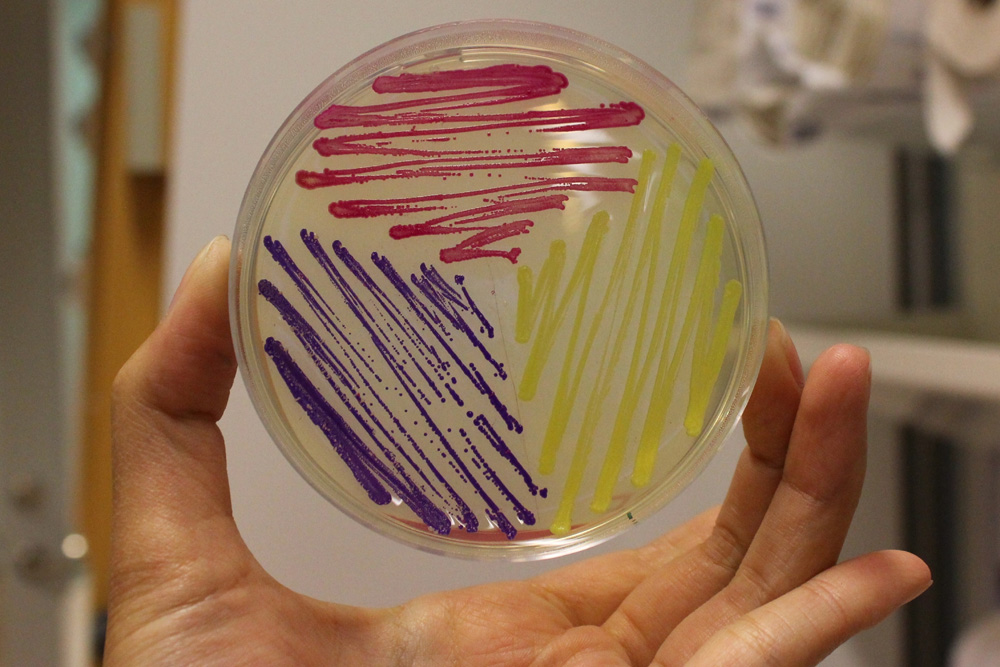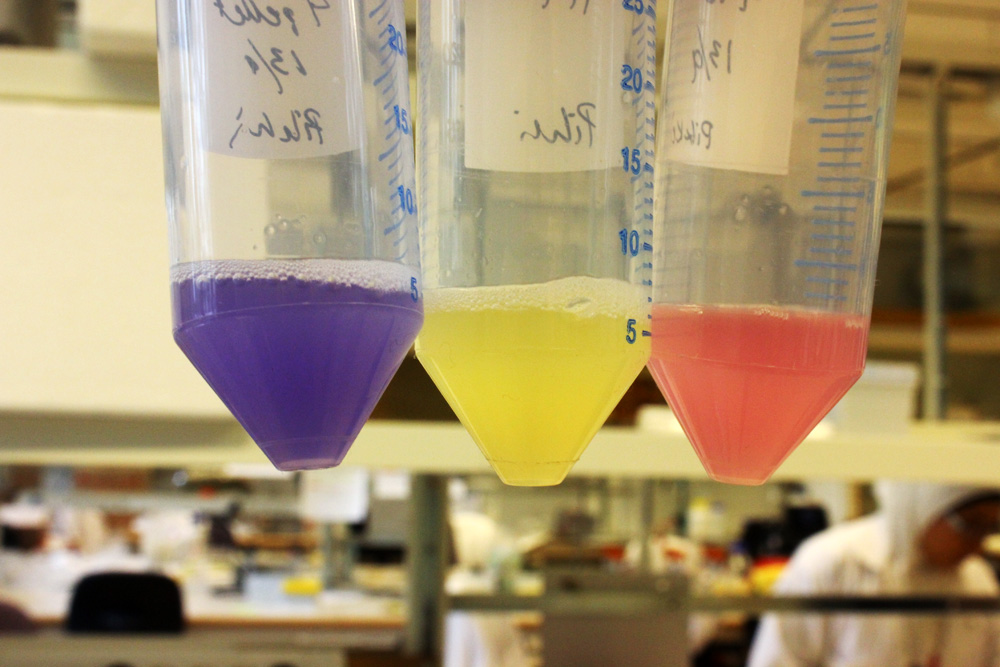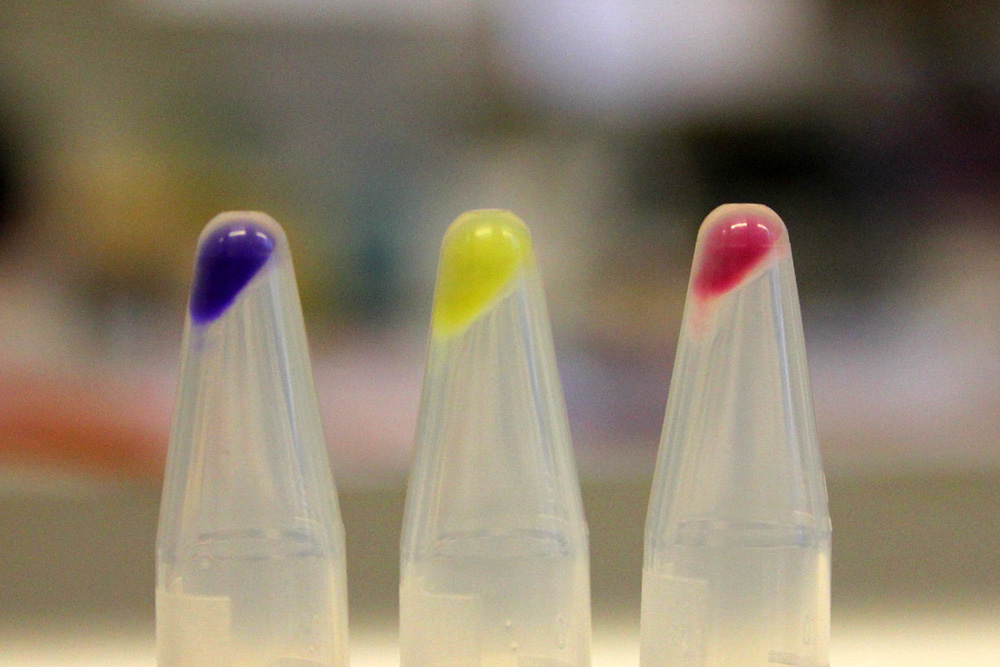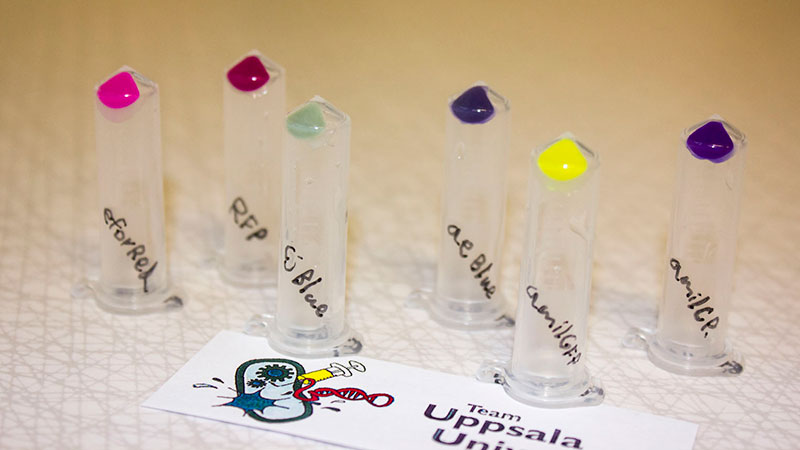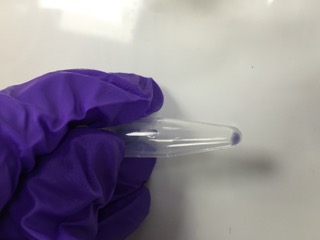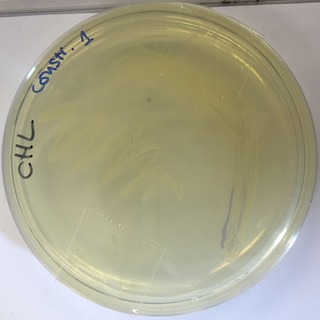Difference between revisions of "Part:BBa K592025"
C.anderson13 (Talk | contribs) |
|||
| Line 22: | Line 22: | ||
[[File:Pellet from 5ml LB broth with transformed Ecoli.jpeg|200px|thumb|centre|Pellet from 5ml LB broth]] | [[File:Pellet from 5ml LB broth with transformed Ecoli.jpeg|200px|thumb|centre|Pellet from 5ml LB broth]] | ||
[[File:Ecoli streak plate after 24 hours.jpeg|200px|thumb|centre|Transformed E-Coli streak plate after 24hours]] | [[File:Ecoli streak plate after 24 hours.jpeg|200px|thumb|centre|Transformed E-Coli streak plate after 24hours]] | ||
| + | Expression of the part in Synechocystis 6803 was attempted but no colour could be seen after successful transformation. | ||
'''iGEM16_Glasgow:''' This BioBrick part was ligated to P25, a native ''Streptococcus thermophilus'' promoter and transformed into S. thermophilus using the shuttle vector pMG36ET. The expected blue colour was visible in ''E. coli'' when using the same BioBrick construct, though slightly less vibrant due to the low copy number of the plasmid. However, in ''S. thermophilus'', no blue colour was observed with transformant colonies. This suggests that amilCP is not suitable as a reporter for this organism. | '''iGEM16_Glasgow:''' This BioBrick part was ligated to P25, a native ''Streptococcus thermophilus'' promoter and transformed into S. thermophilus using the shuttle vector pMG36ET. The expected blue colour was visible in ''E. coli'' when using the same BioBrick construct, though slightly less vibrant due to the low copy number of the plasmid. However, in ''S. thermophilus'', no blue colour was observed with transformant colonies. This suggests that amilCP is not suitable as a reporter for this organism. | ||
Revision as of 15:06, 17 October 2016
B0034-amilCP
Purple-blue chromoprotein amilCP (BBa_K592009) with B0034 RBS. One can add any promoter upstream of this gene.
This chromoprotein from the coral Acropora millepora, amilCP, naturally exhibits strong color when expressed. The protein has an absorbance maximum at 588 nm giving it a purple/blue color visible to the naked eye, thereby requiring no instruments to observe. The strong color is readily observed in both LB or agar culture, in less than 24 hours of incubation.
Usage and Biology
This part is useful as a reporter.
iGEM11_Uppsala-Sweden: Expression of chromoproteins. The images above show E coli constitutively expressing amilCP BBa_K592009 (blue), amilGFP BBa_K592010 (yellow) and RFP BBa_E1010 (red).
iGEM12_Uppsala_University: The Uppsala chromoprotein collection and RFP. The image shows pellets of E coli expressing chromoproteins eforRed BBa_K592012, RFP BBa_E1010, cjBlue BBa_K592011, aeBlue BBa_K864401, amilGFP BBa_K592010 and amilCP BBa_K592009.
iGEM16-CLSB-UK:The consensus promoter Part:BBa_J23119 was assembled with this reporter protein. The construct Part:BBa_K2078002 was carried on the pSB1C3 plasmid for expression and amplification in E-Coli.
Expression of the part in Synechocystis 6803 was attempted but no colour could be seen after successful transformation.
iGEM16_Glasgow: This BioBrick part was ligated to P25, a native Streptococcus thermophilus promoter and transformed into S. thermophilus using the shuttle vector pMG36ET. The expected blue colour was visible in E. coli when using the same BioBrick construct, though slightly less vibrant due to the low copy number of the plasmid. However, in S. thermophilus, no blue colour was observed with transformant colonies. This suggests that amilCP is not suitable as a reporter for this organism.
References
[http://www.ncbi.nlm.nih.gov/pubmed/18648549] Alieva, N. O., et al. 2008. Diversity and evolution of coral fluorescent proteins. PLoS One 3:e2680.
Sequence and Features
- 10COMPATIBLE WITH RFC[10]
- 12COMPATIBLE WITH RFC[12]
- 21COMPATIBLE WITH RFC[21]
- 23COMPATIBLE WITH RFC[23]
- 25COMPATIBLE WITH RFC[25]
- 1000COMPATIBLE WITH RFC[1000]

